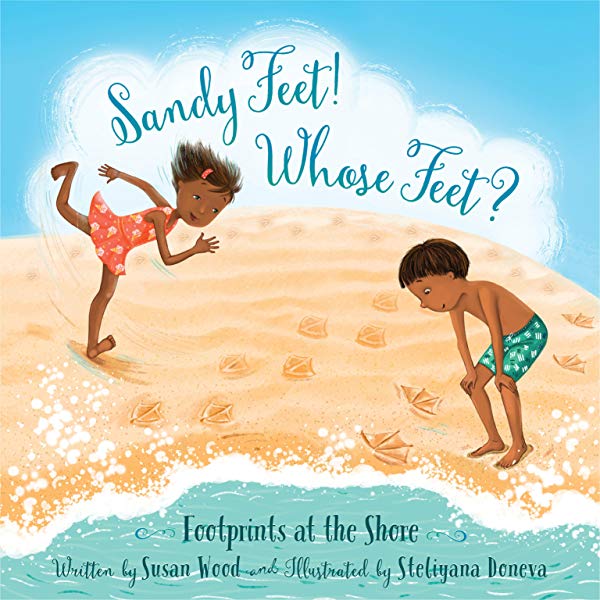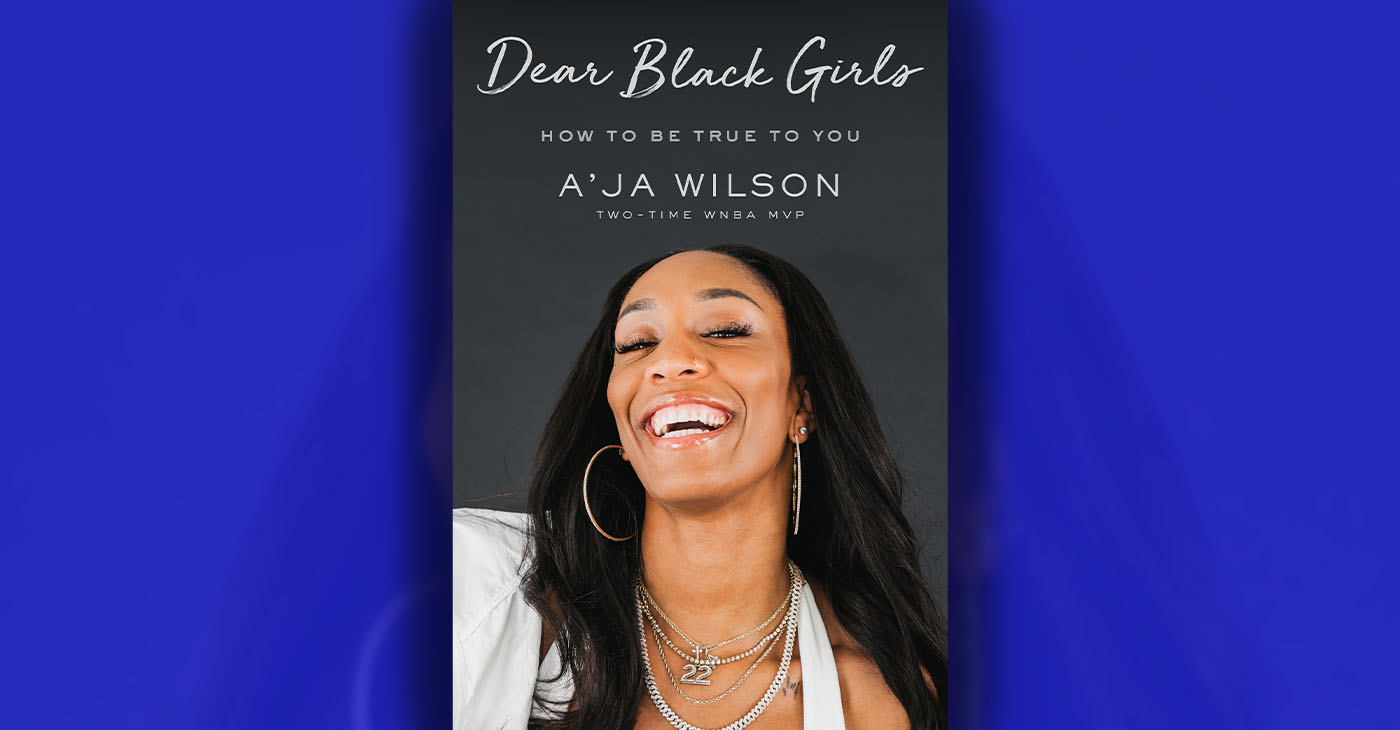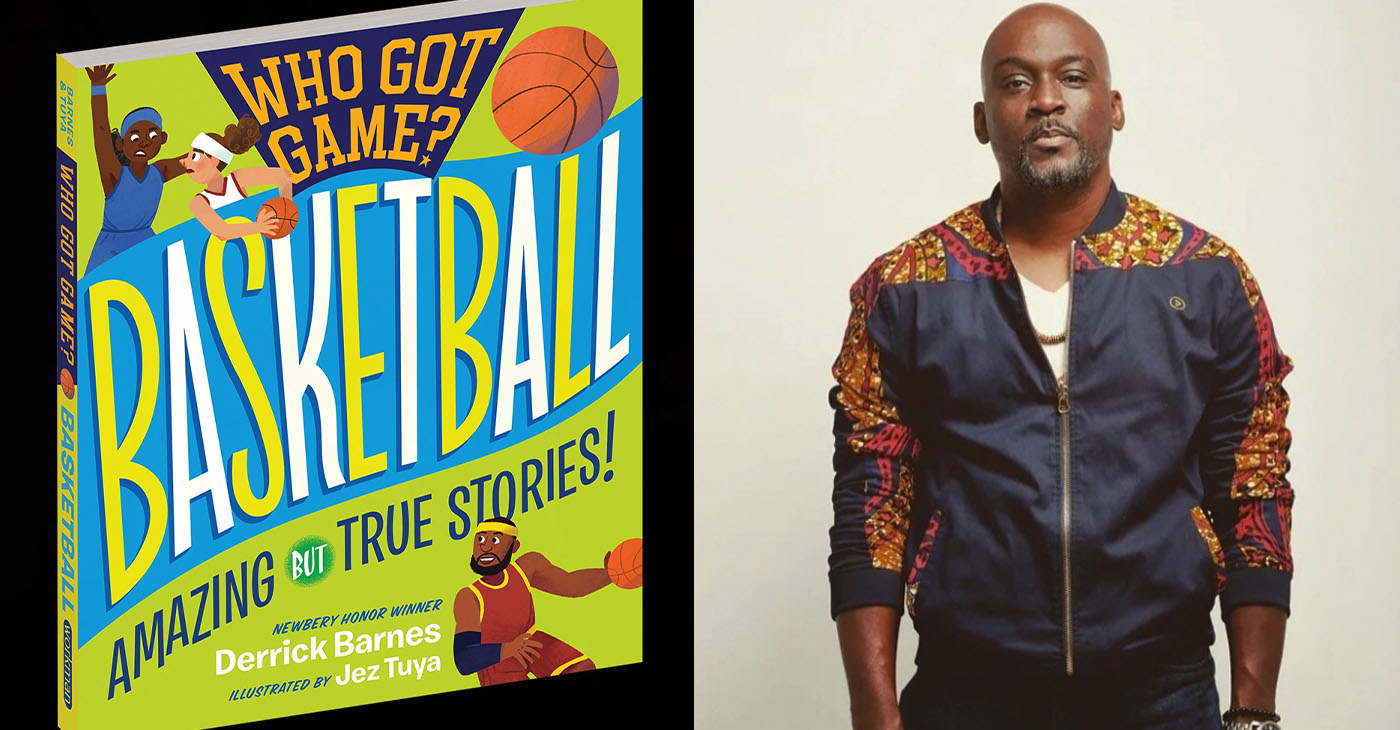Book Reviews
Book Review: “Sandy Feet! Whose Feet?

The sand feels funny, squishing between your toes.
It sticks to the bottom of your feet, the bottom of your hands, and the bottom of your swimsuit, and it’s fun to leave footprints in it, so you can see where you’ve been. It’s always a good day when you’re at the beach, but in “Sandy Feet! Whose Feet?” by Susan Wood, illustrated by Steliyana Doneva, who else is there with you?
It’s sunny, the water’s warm, and yay! You’re at the beach. The waves are perfect for splashing and the sand is wet in some places and dry in others. Who could resist making all kinds of footprints?
Not the dog, whose fat, furry paws make footprints in the sand. You can see his toe-marks and his clawprints as he runs around and splashes.
A sandpiper is a bird that lives at the beach and he runs back and forth on his quick little legs. He jumps and skips and you can see his toes in the sand, too, but they’re very small. The sandpiper’s footprints are from little bird feet.
The seagull, another bird, also leaves footprints on the sand.
If you watch over the water, you might see a pelican, as he dives for dinner. He’s a hungry guy, ready for a few fishy snacks.
Over there, right at the edge of shore, you can see a footprint that looks like someone dragged their feet. That’s the print of the crab, who “scuttles on its way” back to the water. Watch out for his claws! The footprints that look a little like a star are from a starfish who doesn’t want to be caught – and that other shuffle-mark is a turtle who might be ready to make her nest. Baby turtles are the cutest!
Pretty soon, it’s the end of the day and almost time to go home – but wait. Look at those long prints with five little round toes. Who do you think made those footprints in the sand?
The towels, toys, swimsuits and sunscreen are all piled up and ready to go. So are the kids; they’re so excited, they can barely sleep and “Sandy Feet! Whose Feet” is the perfect pre-vacation, before-bedtime treat.

Author Susan Wood
Inside this book, author Susan Wood offers a simple rhyme that’s short on words and light on action, and illustrator Steliyana Doneva matches the tone with muted colors in her drawings. That means a quieter, more relaxing story for your little beachcomber, but it’s one they’ll remember as soon as they hit the sand.
Wood’s tale gives kids something to do while it imparts a different sort of lesson: they’re subtly challenged here to look for marks in the sand made by the beach’s wildlife. More importantly, the children inside this book are respectful of the water and are shown having fun and being safe.
For 4-to-8-year-olds, that’s just-right, and “Sandy Feet! Whose Feet?” may help parents make memories. If you’re heading to the beach for what’s left of summer, step out and get it.
“Sandy Feet! Whose Feet? Footprints at the Shore” by Susan Wood, illustrated by Steliyana Doneva, c.2019, Sleeping Bear Press, $16.99 / $21.99 Canada, 32 pages.
Book Reviews
Book Review: Books for Poetry Month by Various Authors
Picture books for the littles are a great way to introduce your 3-to7-year-old to poetry because simple stories lend themselves to gentle rhymes and lessons. “See You on the Other Side” by Rachel Montez Minor, illustrated by Mariyah Rahman (Crown, $18.99) is a rhyming book about love and loss, but it’s not as sad as you might think.
c.2023, 2024, Various Publishers
$18.99 – $20.00
By Terri Schlichenmeyer
On your hands, you have lots of time.
You can make a song, or you can make a rhyme. Make a long story, make a short one, write what you like, make it simple and fun. Writing poetry uses your imagination: you play with words, paint a picture. There’s no intimidation. Creating poetry can be a breeze, or just reach for and read books exactly like these…
Picture books for the littles are a great way to introduce your 3-to7-year-old to poetry because simple stories lend themselves to gentle rhymes and lessons. “See You on the Other Side” by Rachel Montez Minor, illustrated by Mariyah Rahman (Crown, $18.99) is a rhyming book about love and loss, but it’s not as sad as you might think.
In this book, several young children learn that losing someone beloved is not a forever thing, that it is very sad but it’s not scary because their loved one is always just a thought away. Young readers who’ve recently experienced the death of a parent, grandparent, sibling, or friend will be comforted by the rhyme here, but don’t dismiss the words. Adults who’ve recently lost a loved one will find helpful, comforting words here, too.
Flitting from here to there and back again, author Alice Notley moves through phases of her life, locations, and her diagnosis and treatment of breast cancer in her latest poetry collection, “Being Reflected Upon” (Penguin, $20.00). From 2000 to 2017, Notley lived in Paris where she wrestled with breast cancer. That, and her life abroad, are reflected in the poetry here; she also takes readers on a poetic journey on other adventures and to other places she lived and visited. This book has a random feel that entices readers to skip around and dive in anywhere. Fans of Notley will appreciate her new-age approach to her works; new fans will enjoy digging into her thoughts and visions through poems. Bonus: at least one of the poems may make you laugh.
If you’re a reader who’s willing to look into the future, “Colorfast” by Rose McLarney (Penguin, $20.00) will be a book you’ll return to time and again. This, the author’s fourth collection, is filled with vivid poems of graying and fading, but also of bright shades, small things, women’s lives yesterday and today, McLarney’s Southern childhood, and the things she recalls about her childhood. The poems inside this book are like sitting on a front porch in a wooden rocking chair: they’re comfortable, inviting, and they tell a story that readers will love discovering.
If these books aren’t enough, or if you’re looking for something different, silly, or classic, then head to your favorite bookstore or library. The ladies and gentlemen there will help you figure out exactly what you need, and they can introduce you to the kind of poetry that makes you laugh, makes you cry, entices a child, inspires you, gives you comfort, or makes you want to write your own poems. Isn’t it time to enjoy a rhyme?
Book Reviews
Book Review: “Dear Black Girls: How to Be True to You” by A’Ja Wilson
The envelope on the table is addressed to you. It caught your attention because — who, besides politicians, utilities, and creditors sends anything in the mail these days? Still, it was a nice surprise, no matter what, like a throwback or something. And like the new book, “Dear Black Girls” by A’Ja Wilson, every letter means something.

c.2024, Moment of Life Books /Flatiron Books
$24.99
192 pages
Photo Caption: Courtesy of A’Ja Wilson
The envelope on the table is addressed to you.
It caught your attention because — who, besides politicians, utilities, and creditors sends anything in the mail these days? Still, it was a nice surprise, no matter what, like a throwback or something. And like the new book, “Dear Black Girls” by A’Ja Wilson, every letter means something.
From the time she was born until she was in fourth or fifth grade, A’Ja Wilson lived in a bubble. She didn’t know it; she was only a kid, just being herself with no worries. And then, right before one of her best friends was having a birthday party, Wilson learned that the girl’s dad “really [didn’t] like Black people.” Those few words shook Wilson’s dad, they made her mother quietly angry, and they made Wilson doubt herself for many years.
It was her first reminder: “You’re a girl.
Oh! And you’re a Black girl.
Alright, good luck!”
With the help of her parents and her beloved grandmother, Wilson healed but she never forgot. She made sure to know her roots and her family’s story. She was dyslexic, so she struggled, tried to fit in, and grew taller than most boys, which didn’t help her self-esteem. Neither did the fact that at almost every point in her life, the color of her skin mattered in ways that it shouldn’t have mattered. That included her activity on a basketball court.
Wilson was a young teen when her father first threw her a ball and she hated it, but by the time she graduated from high school, she’d found her way. She’d developed a good “Nonsense Detector.” She got some therapy (“Ain’t no shame in it.”); she learned that when she did her best, there were still going to be haters; and she always remembered to be herself and to be a light for others.
Remember, she says, “You don’t have to be an WNBA player or a politician or a celebrity to have an impact on someone.”
So, will you learn a thing or two by reading “Dear Black Girls”?
Yes and no. In her short introduction, author A’Ja Wilson says that this “is not a self-help book,” and that it’s just “a diary of somebody… who looks like you…” Eh, that’s nothing new but despite her protests, “Dear Black Girls” is helpful. You just have to be ready for it.
That’s not hard; Wilson, a two-time WNBA MVP tells her story with a flair for fun. She even tells the sad tales with exuberance, subtly letting readers know that it’s okay, she’s okay, and it’s all just part of her story. Her voice lets you know how much she enjoys life, even when she has tough things to deal with. It’s like hearing encouragement from the top bunk, or getting straight talk from a mentor.
While it might seem to be a book for teenagers only, “Dear Black Girls” would also be a great resource for younger adults. Take a look, see if it doesn’t get your stamp of approval.
Book Reviews
Book Review: “Who Got Game? Basketball”
A little less than two feet. That’s how far you can get your two feet off the floor if you’re an average kid doing an average vertical jump. Not quite twenty-four inches, but don’t worry: the taller you grow, the higher you could be able to jump. Practice some, dribble a little, shoot more three-pointers, and you might jump right into a book like “Who Got Game? Basketball” by Derrick Barnes, illustrated by Jez Tuya.

A little less than two feet.
That’s how far you can get your two feet off the floor if you’re an average kid doing an average vertical jump. Not quite twenty-four inches, but don’t worry: the taller you grow, the higher you could be able to jump. Practice some, dribble a little, shoot more three-pointers, and you might jump right into a book like “Who Got Game? Basketball” by Derrick Barnes, illustrated by Jez Tuya.
Here we are, football season’s almost over, and your mind has turned to other things – namely, hoops set high over your head, and a round bouncy basketball. Kids like you who “got game” have had it for more than a century. Yes, the game of basketball was created by Dr. James Naismith in 1891 in Massachusetts.
In the years since, basketball has changed a lot, thanks to what Derrick Barnes calls “pioneers.” Julius “Dr. J” Erving improved the dunk. Before that, in 1950, the NBA first allowed Black basketball players on the teams. There have been super-tall players (Manute Bol and Gheorghe Muregan were both seven feet, seven tall) and smaller b-ballers – five-three Muggsy Bogues had a vertical jump of nearly four feet! – and just two years after the game was invented, America had its first women’s team.
A lot of off-court people poured themselves into the game, too. Barnes writes, for example, about Pat Summitt, hoopster, leader, and “one of the greatest coaches in all of sports history.” Her record of 1,098 wins ranks her at first-place in coaching women’s basketball, and as the coach with the second-most wins overall.
You can probably guess that in a book about buckets, there are bucketfuls of stats. Barnes includes a list of NBA players who jumped to a team right out of high school. He writes about the greatest basketball park ever, he explains why winners cut down the net, how Title IX changed the game, why backboards rarely break into a zillion pieces anymore, high scores, bad injuries, “hoops movies,” and where in the world you can pick up a game today.
So, your 9-to-13-year-old loves basketball so much that they dribble a ball in their sleep? They think their favorite jersey is church wear? Then you’ll be the hero of the day when you bring home “Who Got Game? Basketball.”
But first, there’s one big thing you need to know: this is not a how-to book. There aren’t any instructions inside here, no rules or plays to follow. Instead, author Derrick Barnes makes young b-ballers happy by sharing little-known info about the game they love so much, short lists, great stories about great players, wins and losses, and phrases they should know to talk the talk. All this knowledge is supported by colorful illustrations by Jez Tuya that kids will enjoy alongside the facts.
This book is for die-hard young b-ballers, but don’t be surprised if an adult finds a thing or two to learn here. “Who Got Game? Basketball” is a book any fan will want to jump on.
“Who Got Game? Basketball” by Derrick Barnes, Illustrated by Jez Tuya, c.2023, Workman Publishing, $16.99, 172 pages.
-

 Activism4 weeks ago
Activism4 weeks agoOakland Post: Week of March 27 – April 2, 2024
-

 #NNPA BlackPress4 weeks ago
#NNPA BlackPress4 weeks agoCOMMENTARY: D.C. Crime Bill Fails to Address Root Causes of Violence and Incarceration
-

 #NNPA BlackPress4 weeks ago
#NNPA BlackPress4 weeks agoFrom Raids to Revelations: The Dark Turn in Sean ‘Diddy’ Combs’ Saga
-

 #NNPA BlackPress4 weeks ago
#NNPA BlackPress4 weeks agoCOMMENTARY: Lady Day and The Lights!
-

 #NNPA BlackPress4 weeks ago
#NNPA BlackPress4 weeks agoMayor, City Council President React to May 31 Closing of Birmingham-Southern College
-

 #NNPA BlackPress4 weeks ago
#NNPA BlackPress4 weeks agoBaltimore Key Bridge Catastrophe: A City’s Heartbreak and a Nation’s Alarm
-

 #NNPA BlackPress4 weeks ago
#NNPA BlackPress4 weeks agoBaltimore’s Key Bridge Struck by Ship, Collapses into Water
-

 #NNPA BlackPress4 weeks ago
#NNPA BlackPress4 weeks agoBeloved Actor and Activist Louis Cameron Gossett Jr. Dies at 87









































